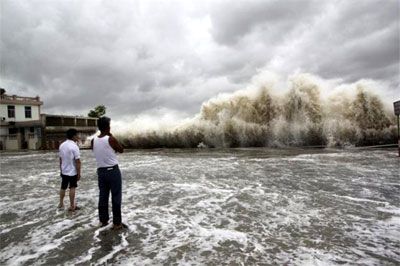Subject to finance & tech from rich countries through an ambitious, fair Paris deal
 The government has pledged to reduce its greenhouse gas emissions intensity — the ratio between a country’s gross emissions to its gross domestic product at a particular point — by 33-35 per cent by 2030, compared to 2005 levels. For this, India has to ensure about 40 per cent of its electricity comes from non-fossil fuel sources.
The government has pledged to reduce its greenhouse gas emissions intensity — the ratio between a country’s gross emissions to its gross domestic product at a particular point — by 33-35 per cent by 2030, compared to 2005 levels. For this, India has to ensure about 40 per cent of its electricity comes from non-fossil fuel sources.
India will also increase its forest cover to create an additional carbon sink of 2.5-3 billion tonnes of carbon dioxide equivalent.
These targets (called the intended nationally determined contribution, or INDC) were presented to the United Nations Framework Convention on Climate Change for the global Paris summit on Thursday. Prakash Javadekar, Union environment and forests minister, released these to the media in Delhi on Friday.
The government has said till 2030, these emission intensity-reduction targets and adaptation to climate change will require about $2.5 trillion, as well as an array of technologies.
It committed to mobilise new funds from developed countries and said it would work to build an international architecture for diffusion of cutting-edge technologies, as well as collaborative research and development in this regard.
India, in its submission, said, “The successful implementation of INDC is contingent upon an ambitious global agreement, including additional means of implementation to be provided by developed countries, technology transfer and capacity building, following articles 3.1 and 4.7 of the convention.”
Article 3.1 refers to the principle of equity and common but differentiated responsibility, as well as the need for developed countries to take the lead in combating climate change. Article 4.7 of the convention says, “The extent to which developing countries will effectively implement their commitments under the convention will depend on the effective implementation by developed countries of their commitments related to financial resources and transfer of technology and will take fully into account the fact that economic and social development and poverty-eradication are the first and overriding priorities of developing countries.”
Javadekar said while a large proportion of funding would come from domestic sources, developed countries were obliged to provide funding and technology. “We were not part of the problem but we want to be part of the solution,” he said, adding on several emission metrics, India was and would remain well below developed-world levels, though it had a huge development deficit to bridge in the coming decade and a half.
Officials involved in the preparation of the INDC said the caveats were similar to those of other developing countries, to safeguard against the possibility of an adverse outcome at Paris.
In conclusion, the INDC noted, “Through this INDC, India has shown its commitment to combat climate change and these actions are important contributions to the global effort. However, our efforts to avoid emissions during our development process are also tied to the availability and level of international financing and technology transfer, as India still faces complex developmental challenges.”
Not relenting to pressure from some developed countries to undertake sector-specific targets, India has explicitly stated, “It is clarified that India’s INDC do not bind it to any sector-specific mitigation obligation or action, including in the agriculture sector. India’s goal is to reduce overall emission intensity and improve the energy efficiency of its economy over time and, at the same time, protect the vulnerable sectors of the economy and our society.”
In 2010, India had committed that by 2020, it would reduce the emissions intensity of its economy 20-25 per cent compared to 2005 levels. In its 38-page document to the UN climate convention, the Union government has said India will undertake the emission intensity reduction and the changing of energy mix by 2030, “being sanguine about the unencumbered availability of clean technologies and financial resource from around the world”.
It adds India will “mobilise domestic and new and additional funds from developed countries to implement the mitigation and adaptation actions in view of the resource required and the resource gap”.
In another section of the document, it lists an array of existing and future technologies India will need to move towards a low carbon-development route.
The INDC begins by listing a wide array of activities India has already undertaken to reduce emissions and adapt to climate change, including the ambitious target of setting up 175 Gw of solar and wind power capacity by 2022 and an enhanced energy-efficiency mission across industrial sectors.
It also promises to increase the share of renewable energy in the energy mix, though it doesn’t explicitly mention 300-350 Gw of solar and wind power capacity will be required to achieve non-fossil fuel power capacity of 40per cent, a projection the government has made to arrive at the INDC.
The INDC also mentions the initiatives the government will launch, including introduction of new, more efficient and cleaner technologies in thermal power generation, reduction of emissions from the transportation sector, promotion of energy efficiency in industry, transportation, buildings and appliances, and reduction of emissions from waste.








